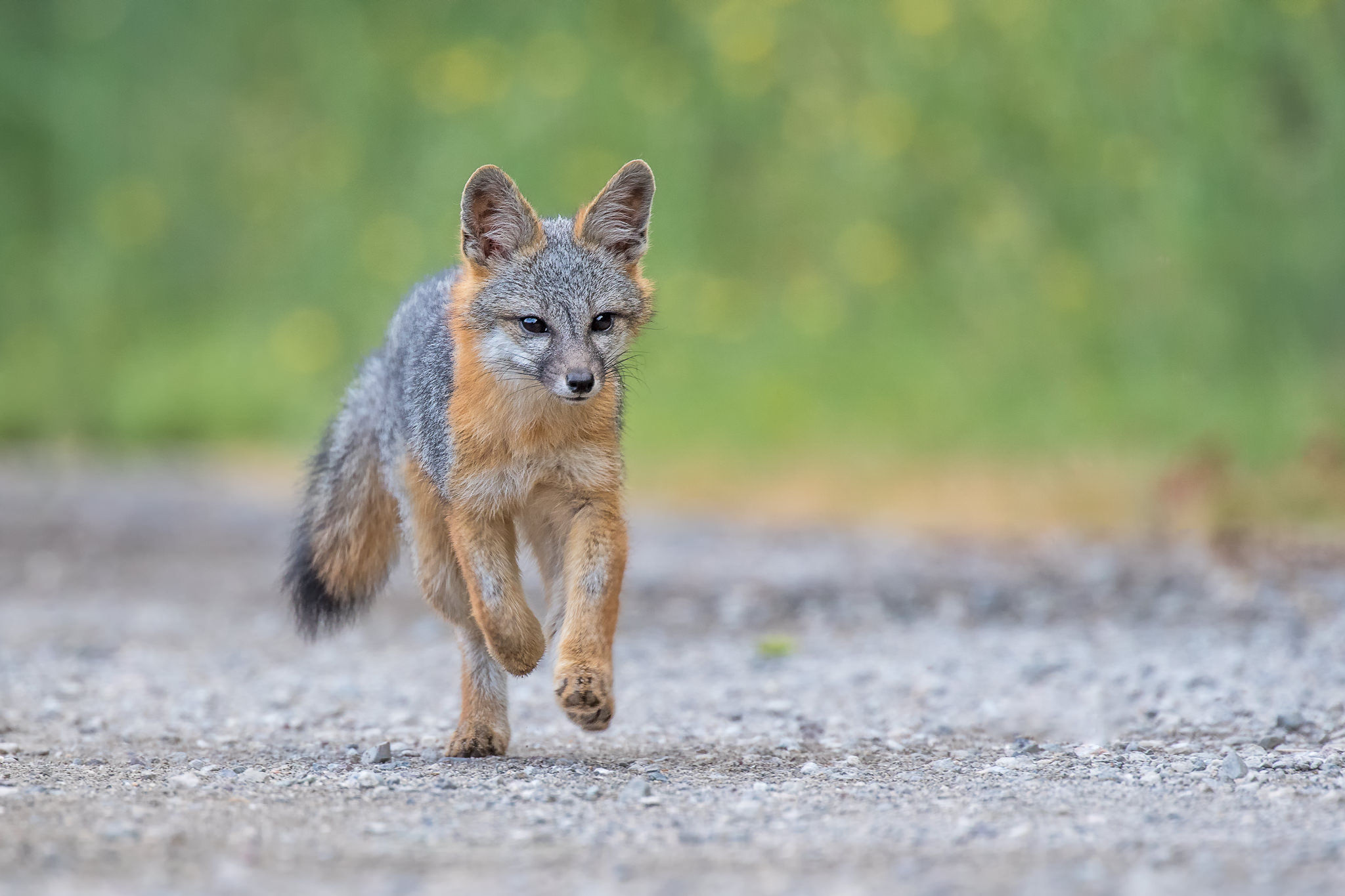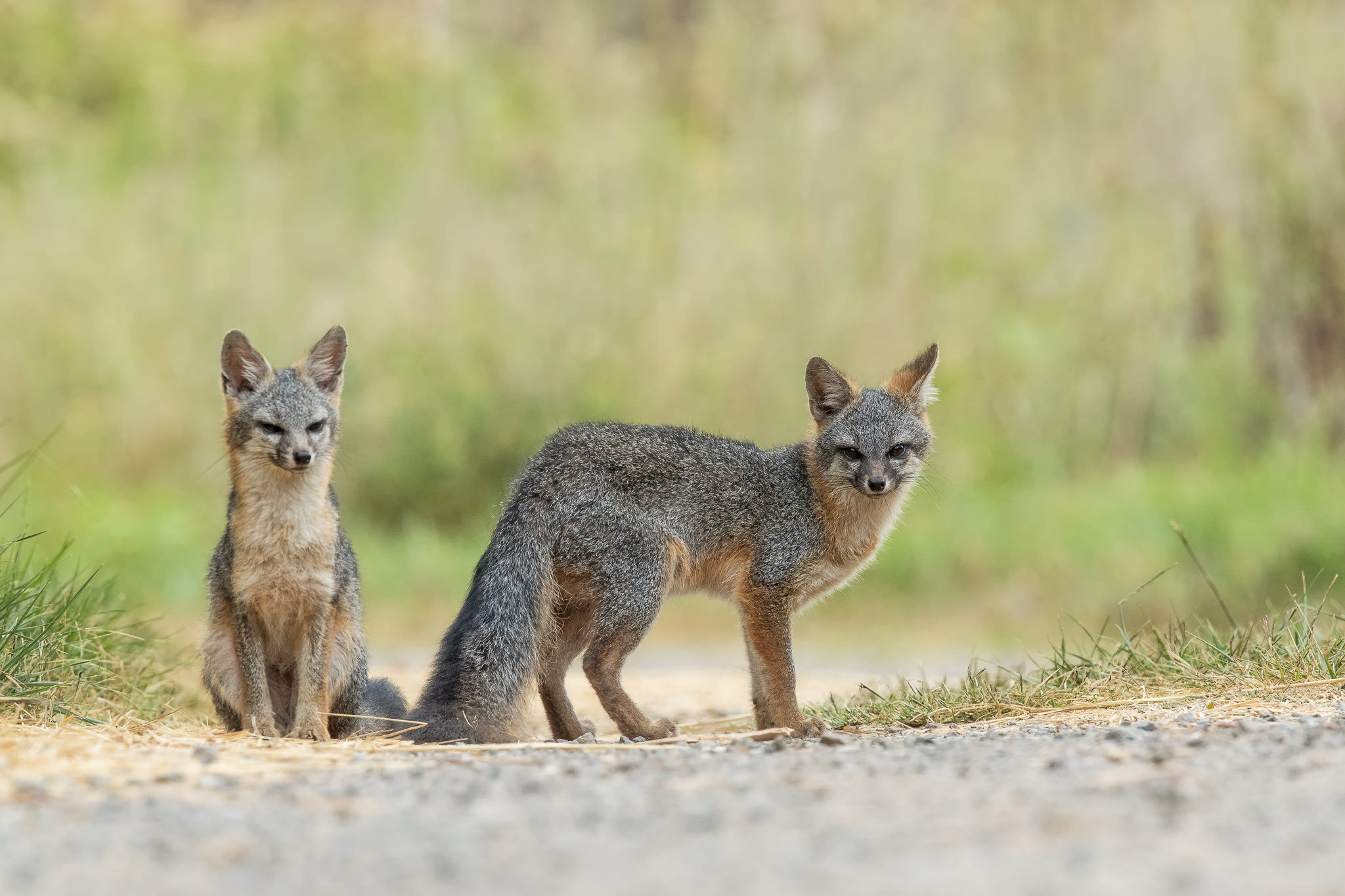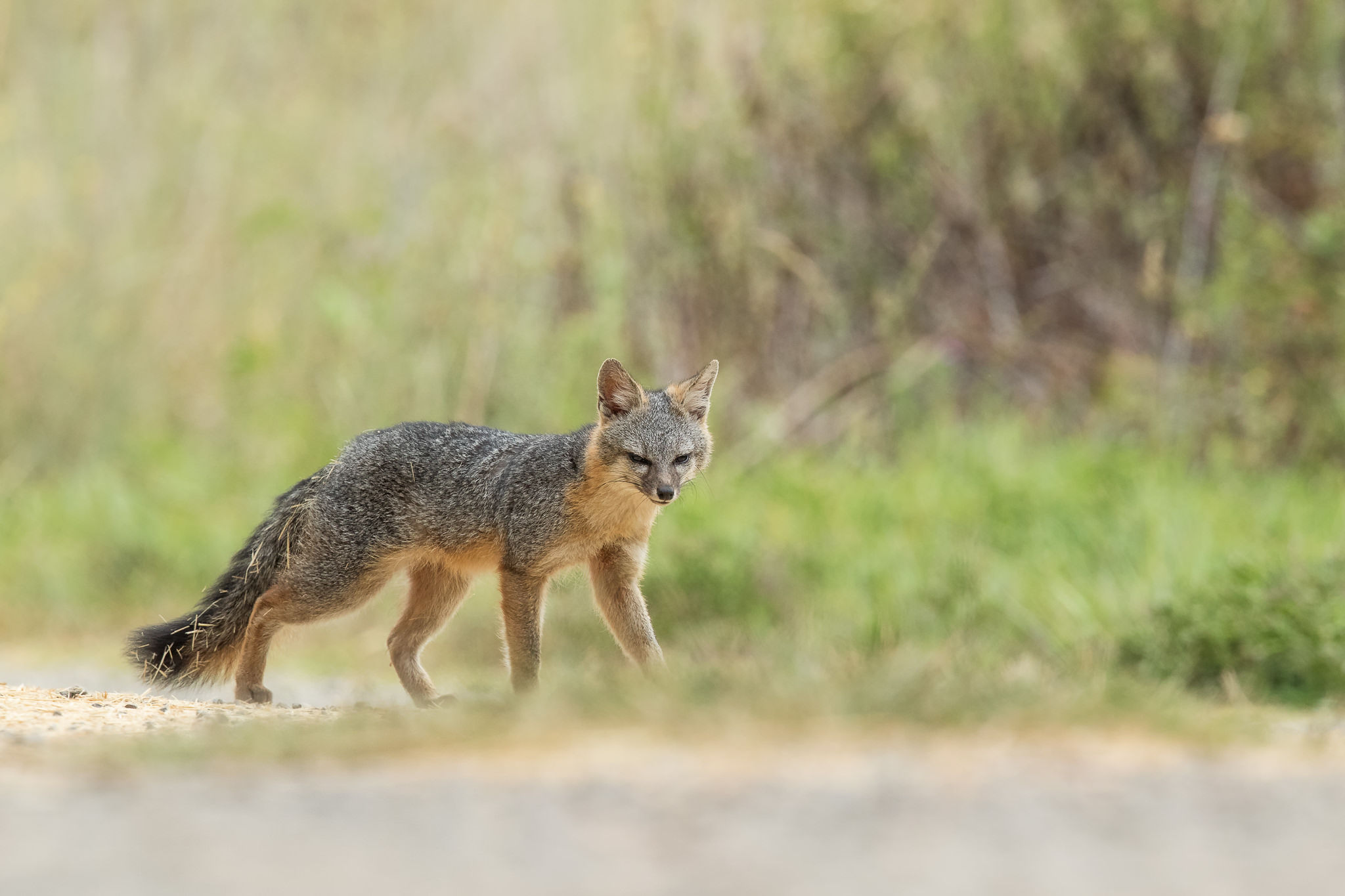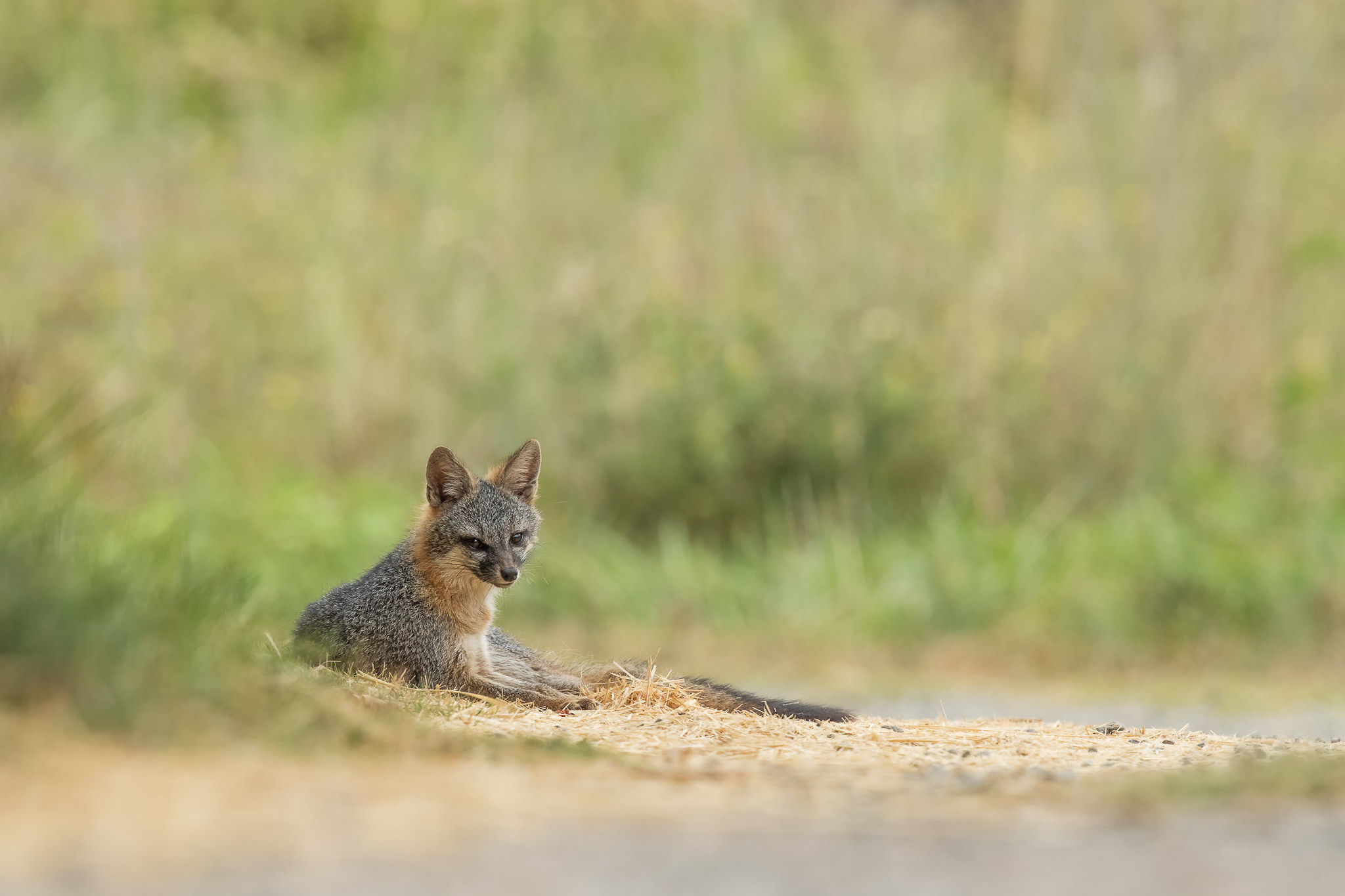The gray fox (Urocyon cinereoargenteus), or grey fox, is a carnivorous mammal of the family Canidae ranging throughout most of the southern half of North America from southern Canada to the northern part of South America (Venezuela and Colombia). No other canid’s natural range spans both North and South America and it is the only American canid that can climb trees. This species and its only congener, the diminutive Channel Island fox (Urocyon littoralis), are the only living members of the genus Urocyon, which is considered to be the most basal of the living canids. Though it was once the most common fox in the eastern United States, and still is found there, human advancement and deforestation allowed the red fox to become more dominant. The Pacific States still have the gray fox as a dominant. Its specific epithet cinereoargenteus means ‘ashen silver’.
The gray fox appeared in North America during the mid-Pliocene epoch 3.6 million years ago (AEO) with the first fossil evidence found at the lower 111 Ranch site, Graham County, Arizona with contemporary mammals like the giant sloth, the elephant-like Cuvieronius, the large-headed llama, and the early small horses of Nannippus and Equus. Genetic analyses of the fox-like canids confirmed that the gray fox is a distinct genus from the red foxes (Vulpes spp.). Genetically, the gray fox often clusters with two other ancient lineages, the east Asian raccoon dog (Nyctereutes procyonoides) and the African bat-eared fox (Otocyon megalotis). Chromosome number is 2n=66. Faunal remains at two northern California cave sites confirm the presence of the gray fox during the late Pleistocene. Genetic analysis has shown that the gray fox migrated into the northeastern United States post-Pleistocene in association with the Medieval Climate Anomaly warming trend. Recent mitochondrial genetic studies suggests divergence of North American eastern and western gray foxes in the Irvingtonian mid-Pleistocene into separate sister taxa.
The gray fox’s dwarf relative, the Channel Island fox, is likely descended from mainland gray foxes. These foxes apparently were transported by humans to the islands and from island to island, and are descended from a minimum of 3-4 matrilineal founders.
The gray fox’s ability to climb trees is shared only with the Asian raccoon dog among canids. Its strong, hooked claws allow it to scramble up trees to escape many predators, such as the domestic dog or the coyote, or to reach tree-bound or arboreal food sources. It can climb branchless, vertical trunks to heights of 18 meters and jump from branch to branch. It descends primarily by jumping from branch to branch, or by descending slowly backwards as a domestic cat would do. The gray fox is nocturnal or crepuscular and makes its den in hollow trees, stumps or appropriated burrows during the day. Such gray fox tree dens may be located 30 ft above the ground. Prior to European colonization of North America, the red fox was found primarily in boreal forest and the gray fox in deciduous forest, but now the red fox is dominant in most of the eastern United States since they are the more adaptable species to development and urbanization. In areas where both red and gray foxes exist, the gray fox is dominant.
Source: wikipedia






